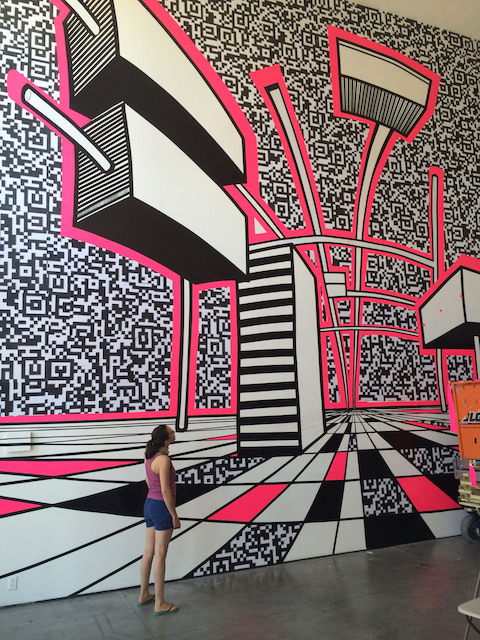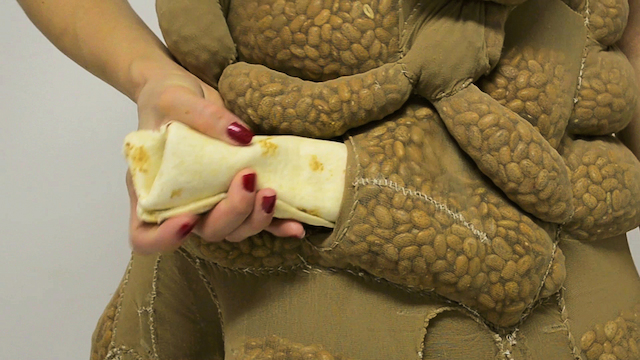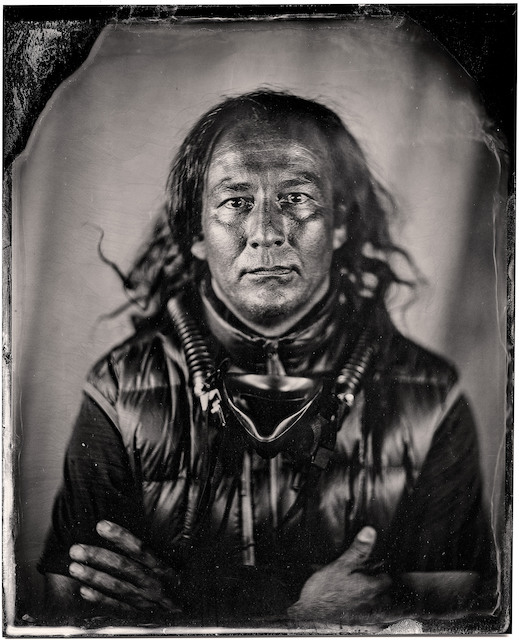Growing up in the shadow of a wall leaves an indelible mark. For El Paso-based artist Jessica Pizaña Roberts, the ever-visible border between the US and Mexico makes her question who she is. “People are always trying to put you in a box with a certain label,” says Pizaña Roberts. “But that’s not who we really are. Identities are so fragile—you can’t pin them down.” Belonging is problematic along the US-Mexico divide, which author Gloria Anzaldúa calls “una herida abierta,” an open wound. But not knowing where you stand has a positive side for Pizaña Roberts. “When you never fit in, that’s when you can really start exploring who you are.” Her performance pieces and videos do that by stripping away stereotypes often imposed on Mexican-Americans.Pizaña Roberts is one of 16 artists from the US Southwest and Latin America whose works feature in Digital Latin America, an art event that brings together museum exhibitions, talks, community programs and a block party where Pizaña Roberts and other artists will perform. “Some of the world’s best digital art is coming out of Latin America,” says Suzanne Sbarge, executive director of 516 ARTS, the non-profit arts and education organization behind the event. “We wanted to bring some of this art to Albuquerque to show how digital innovations can bridge the cultural divide.” While the works vary widely, they all use digital technologies to traverse the real and figurative borders that populate our lives.“The physical and virtual worlds are not as opposite as we believe,” says Colombian artist Jessica Angel. “My work emphasizes the close relationship … between organic and inorganic, natural and artificial.” In “Hemispherical Immersion,” Angel ponders what the internet would look like if it were an actual physical space, if we could “sightsee through the superhighways of information.” The work is a three-dimensional installation whose disorientating angles make it feel like a rabbit hole connecting the real world with the cyberworld.As we journey ever deeper into cyberspace, there’s a growing hunger for the tactile. “With the advent of touch technologies, the virtual seems to be turning tangible,” says Peruvian artist Paola Torres Nuñez del Prado. Her work “Autorretrato” (self-portrait) connects the virtual with the physical by inviting viewers to move their fingers over braille lettering on a canvas. Software then converts these movements into sounds, which create an audio-based “portrait” of the experience. The work demonstrates some of the many translations that technology makes possible: from analog to digital, from touch to sound, from human language to the 1s and 0s of computer code.Colombian artist Javier Villegas explores how our relationship with nature translates into a digital context. His work “Herbaceous” displays a digital image of trees gently swaying in the breeze. The tree leaves recreate viewers’ faces as they walk past a nearby camera. “I want to represent a relation of symbiosis between humans and trees instead of one of domination,” explains Villegas. “Herbaceous” reminds us of our connection to nature, while also showing that we increasingly seek out that connection through virtual channels.There’s a highly interactive quality to Digital Latin America that elevates it far beyond a conventional museum exhibition. “Art becomes more accessible when people can participate in it, engage with it directly,” says Teresa Buscemi, program coordinator at 516 ARTS. Event-goers have ample opportunity to take part through hands-on installations and a rich lineup of talks offered at a two-day symposium. Sbarge agrees. “Everyone is invited to join in the conversation about how connectivity through virtual means has impacted the way people in Latin America and the US Southwest connect, learn and create.” Symposium highlights include a panel on interactivity in digital art, a talk on Latin American artists by Pablo Helguera of the Museum of Modern Art and a presentation on technology and globalization by acclaimed artist and filmmaker Alex Rivera.But it’s not all talks and museum events. Digital Latin America also features a Downtown block party with artist performances, food vendors and interactive demos. Attendees can enjoy music, interactive murals, a film and participatory activities by ¡Explora!. Pizaña Roberts will perform her video piece, “Logos,” which involves a garment stuffed with pinto beans, a reference to the Mexican woman who appears on the label of Rosarita canned beans. “I’m working against the stereotype of Rosarita as a sexual symbol to sell a product,” explains Pizaña Roberts, who plans to serve her weight in beans to the audience. In this way, she symbolically sheds the stereotype of Rosarita. “I’m fascinated with the idea of canceling oneself out—it’s important to challenge the identities others impose on us so we can find out who we really are.”Navajo artist William Wilson also uses his art to push back against stereotypes and transcend some of the barriers he’s encountered. “I grew up between the rez and San Francisco,” says Wilson. “Photography is the language that has allowed me to interact with both these worlds.” Like many artists in Digital Latin America, Wilson leaps the boundary between conventional and digital techniques. In “Talking Tintypes,” he uses a wet-plate approach to expose portraits of contemporary Native Americans on thin sheets of metal. “I love the alchemy of the darkroom and … the interaction of silver, light and chemistries,” he explains. Wilson then transfers these images to digital prints, which visitors to 516 ARTS can scan with their smartphones. A downloadable app animates the portraits and allows them to tell their stories. Digital Latin America uses digital art and technologies to make us rethink borders between cultures, languages and media. This invites us to enter a space somewhere between the physical geographies where we live and the boundary-less virtual realms where we travel. To navigate this in-between world, “you must live sin fronteras”—to requote Anzaldúa—“be a crossroads.”
Digital Latin America opening and block party
Saturday, June 7, 5 to 9pmExhibit continues through August 30516 ARTS516 Central SW; block party outdoors on Central between Fifth and Sixth Streets242-1445, 516arts.orgFREESymposiumSaturday, June 7, 10am to 4:15pm, and Sunday, June 8, 11am to 4:15pmAlbuquerque Museum of Art & History2000 Mountain NWAdmission: $55 general, $50 516 ARTS members, $25 studentsRegister at regonline.com/DLASatellite exhibition opening receptionFriday, June 6, 6 to 8pmExhibit runs June 7 through July 26Center for the ArtsUNM Main Campusunmartmuseum.orgFREE













